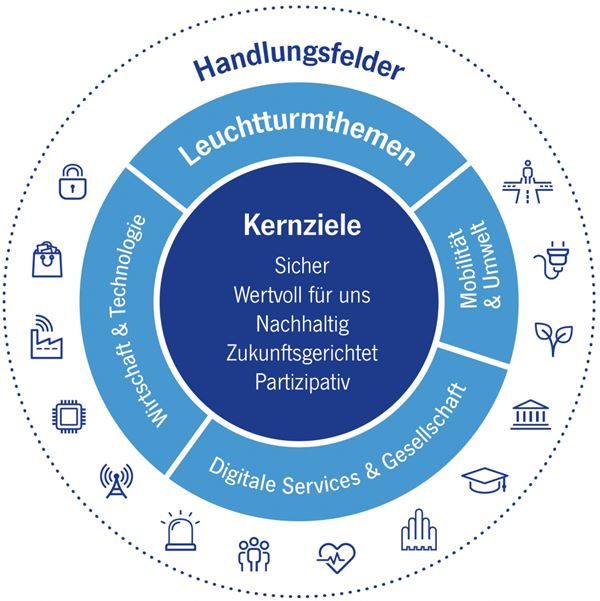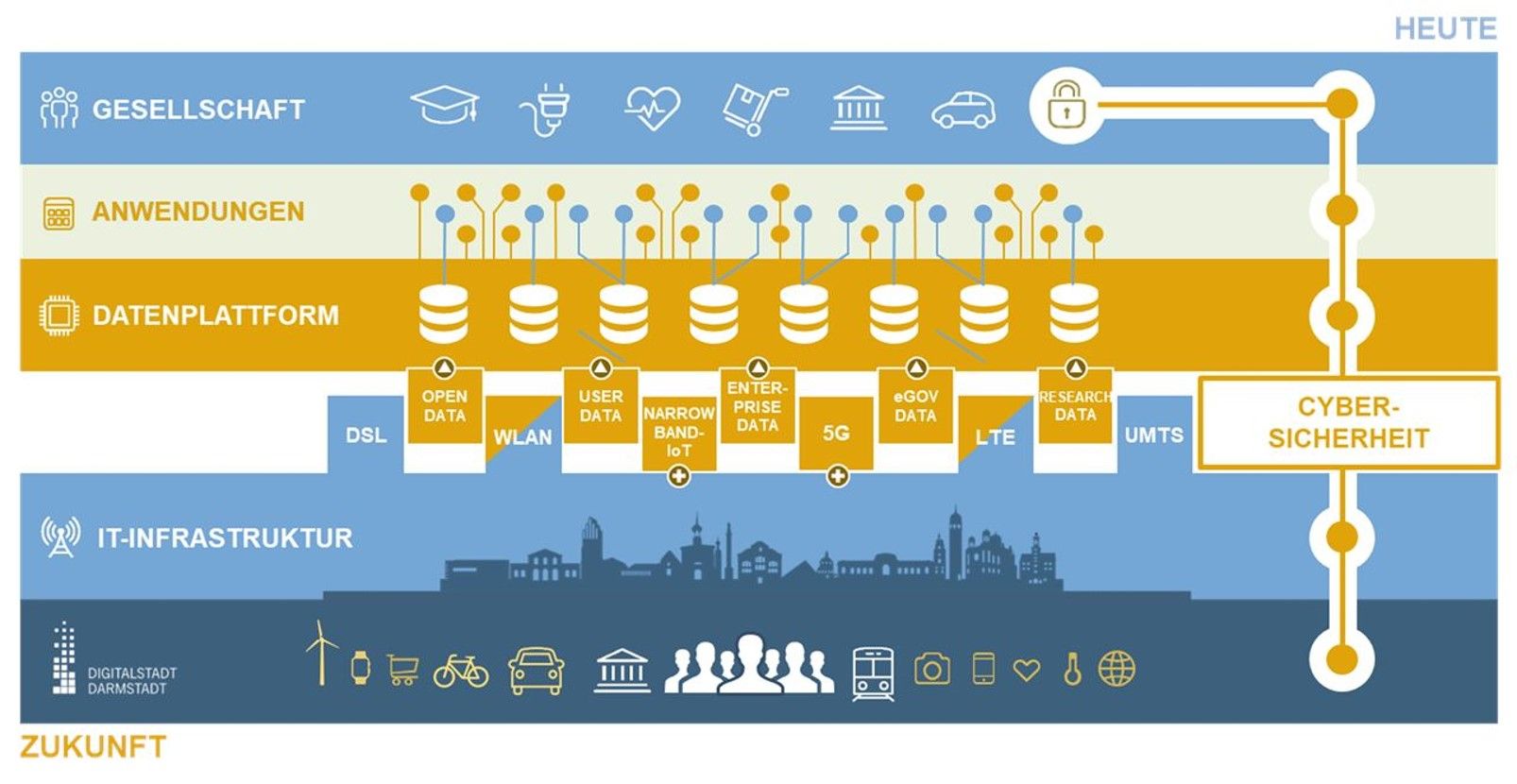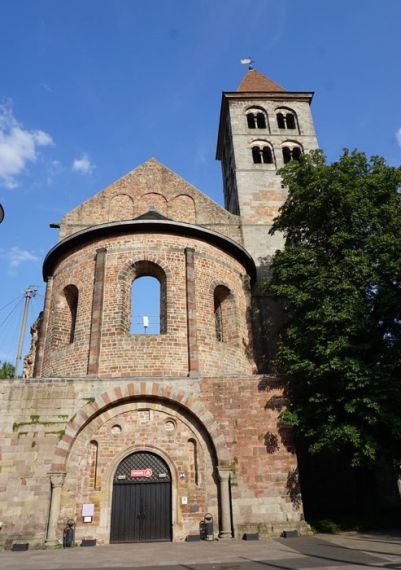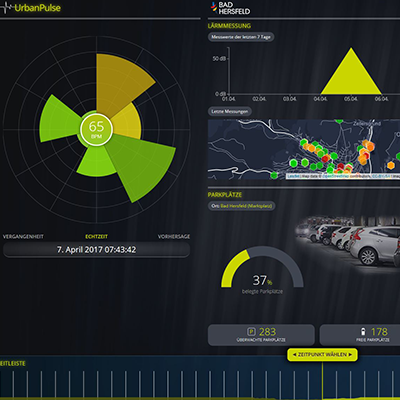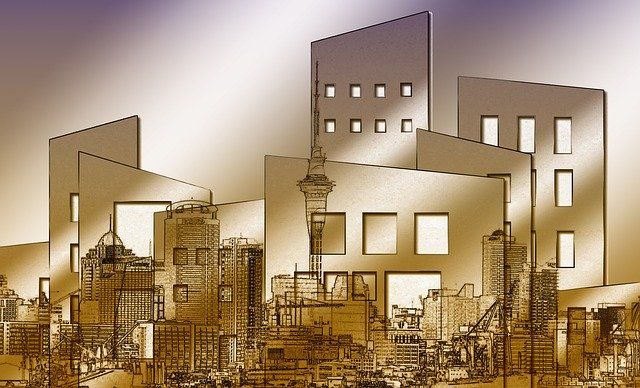Use Cases
Examples of successful cooperation
DIGITAL CITY DARMSTADT
Holistic approach
Darmstadt, Traffic management
The digital city Darmstadt has relied on a modern and real-time traffic control system. Nevertheless, due to the current regular high level of air pollution there is an annual exceedance of the annual mean limit value for NO2 and CO2. This leads to an acute need for action to liquefy traffic and reduce emissions from transport.
Collection, evaluation, visualization and further use of anonymized urban data to create numerous new added values for the residents of the digital city Darmstadt, such as the improvement of air quality, creation of optimal planning bases for the ecological traffic control of the future, interaction with the residents through transparent and visualized data of the city.
UrbanPulse (Open Urban Data Platform),
ECOMAT (traffic light phase prediction for personal green wave),
[ui!] ENVIRONMENT (environmental sensors)
Participating companies of the [ui!] Group:
[ui!] Urban Software Institute
[ui!] Urban Lighting Innovations
[ui!] Urban Mobility Innovations
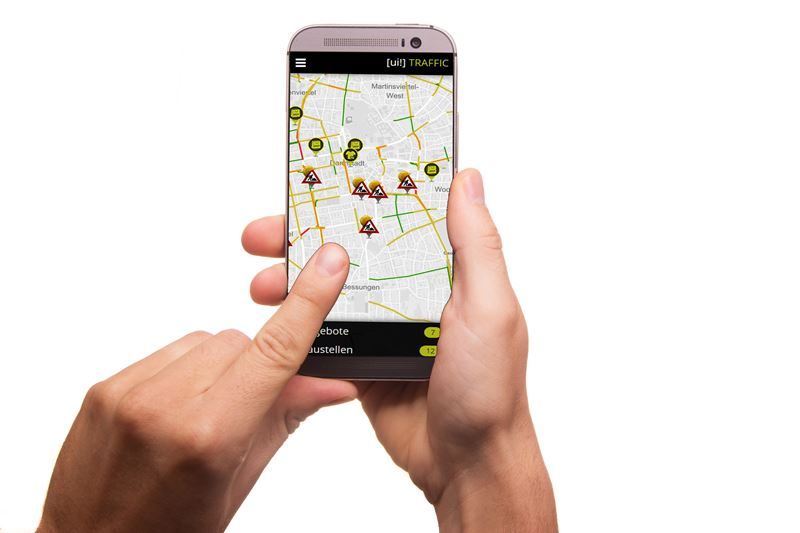
Darmstadt, Traffic light phase prediction
The digital city of Darmstadt regularly has high air pollution levels and an annual Exceedance of the annual mean limit value for NO2 and CO2. This leads to an acute need for action to liquefy traffic and reduce emissions from transport.
For this purpose, the information on all traffic lights is transmitted from the traffic control computer of the digital city of Darmstadt to the central data platform ([ui!] UrbanPulse), analyzed and forwarded in real time to the [ui!] ECOMAT App.
The more road users use this app and follow the suggestions regarding speed recommendation for the personal green wave, the more fluid traffic can lead to improved air quality and lower fuel consumption.
UrbanPulse (Open Urban Data Platform),
ECOMAT (traffic light phase prediction for personal green wave)
Participating companies of the [ui!] Group:
[ui!] Urban Software Institute
[ui!] Urban Mobility Innovations
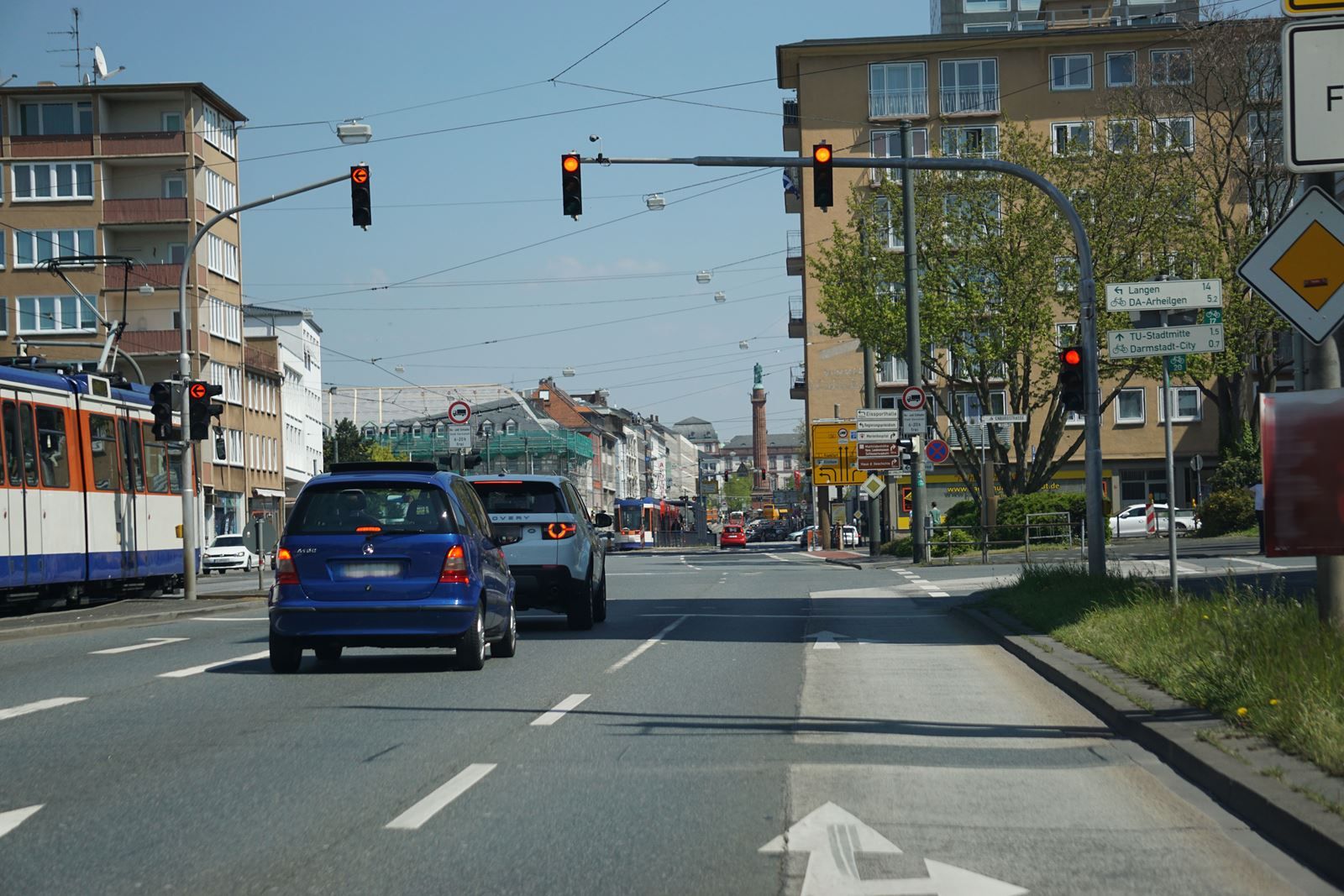
Darmstadt, Environmental sensors and urban infrastructure
The digital city Darmstadt has long relied on a modern and real-time traffic control system. Nevertheless, due to the current regular high level of air pollution there is an annual exceedance of the annual mean limit value for NO2 and CO2. This leads to an acute need for action to liquefy traffic and reduce emissions from transport.
Collection, evaluation, visualization and further use of anonymized urban data to create numerous new added values for the residents of the digital city of Darmstadt, such as the improvement of air quality, creation of optimal planning bases for the ecological traffic control of the future, interaction with the citizen through transparent and visualized data of the city.
UrbanPulse (Open Urban Data Platform),
[ui!] ENVIRONMENT (environmental sensors)
Participating companies of the [ui!] Group:
[ui!] Urban Software Institute
[ui!] Urban Lighting Innovations
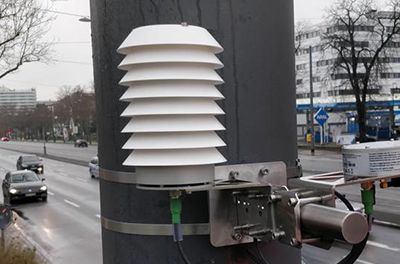
We support you in your digital transformation!
We are also available for demonstrations at our branches in the U.S., Berlin, Darmstadt, Munich, Walldorf or Chemnitz.
We are also available for demonstrations at your location.
Festival City Bad Hersfeld
Holistic approach
The advantage for Bad Hersfeld lies in the data sovereignty guaranteed in this way, which means that the city always has data sovereignty and can decide for itself which data it wants to use. They are all stored on a central data platform. This evolutionary approach is the basis of the holistic digitization concept of Bad Hersfeld and [ui!] UrbanPulse serves as a necessary instrument for the implementation.
For example, a few years ago, noise information within Bad Hersfeld was collected by the citizens of Bad Hersfeld by means of voluntary smartphone measurements, but now the noise and climate information is collected, analysed and visualised on the central data platform by environmental sensors distributed throughout the town. This enables a clearer and near-real-time analysis of climate data. When purchasing new environmental sensors, the tendering criteria were deliberately taken into account.
Bad Hersfeld, Data Platform & Visualization
The city of Bad Hersfeld wants to collect all urban data on a data platform, process them and make them available for further use.
Due to its central location in the middle of Germany, Bad Hersfeld has a high volume of traffic, especially from trucks of the local logistics companies. Added to this is the proximity to the motorway and the associated noise and exhaust emissions. These are collected, analysed and processed by various sensors, as well as other environmental, traffic, charging infrastructure and parking information, and are then passed on publicly via the [ui!] COCKPIT on the Internet as added value for the residents.
[ui!] UrbanPulse (Open Urban Data Platform)
[ui!] COCKPIT (https://badhersfeld.urbanpulse.de),
Sensors
Beteiligte Unternehmen der [ui!] Group:
[ui!] Urban Software Institute
Bad Hersfeld, Lighting Stiftsruine
In Bad Hersfeld the nationally known festival takes place every year in the ruins of the monastery. In the future, the forecourt of the ruins of the abbey is to have new intelligent lighting with additional functions.
By means of intelligent street lighting, an attractive lighting system controlled according to demand is to be created, which offers visitors to the festival in and around the ruins of the monastery more security and further added value. For this purpose [ui!] ULI installed new luminaires with Smart Lighting components and equipped them with suitable sensors. Video cameras can monitor the site if required, a public WLAN is provided and announcements can be made to visitors via integrated speakers. Outside the festival, the cameras can be blinded at any time.
UrbanPulse (Open Urban Data Platform),
Sensors,
Intelligent street lighting
Participating companies of the [ui!] Group:
[ui!] Urban Software Institute
[ui!] Urban Lighting Innovations
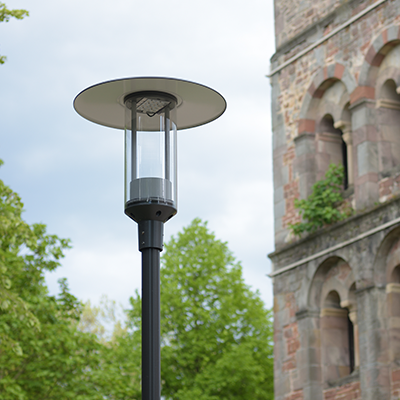
Bad Hersfeld, Festival (Hessentag)
Bad Hersfeld hosted the Hessentag in 2019 and had to set up a control center for the 10-day event, where all data important for the safe and smooth running of the event were collected, analyzed and visualized in order to obtain a central overview and to be able to intervene if necessary.
With the [ui!] FestivalCOCKPIT, innovative 3D representations of visitor flows, traffic situation, parking lot occupancy and weather data were displayed in a central cockpit, which interactively provided the organizers and security forces with the data they needed to ensure a smooth event. Non-safety relevant data was also displayed to the visitors in real time in a festival app, so that they were guided to the next available parking space as quickly as possible before arriving at the event. Numerous different data sources were connected and camera feeds integrated. These were displayed on several monitors in a cockpit in the control center of the major event. Further, sensor-independent data sources were evaluated in order to monitor the approach routes and the traffic jam situation, for example, and to be able to intervene in case of a traffic jam.
UrbanPulse (Open Urban Data Platform),
ECOMAT (traffic light phase prediction for personal green wave),
[ui!] ENVIRONMENT (environmental sensors)
Participating companies of the [ui!] Group:
[ui!] Urban Software Institute
[ui!] Urban Lighting Innovations
[ui!] Urban Mobility Innovations
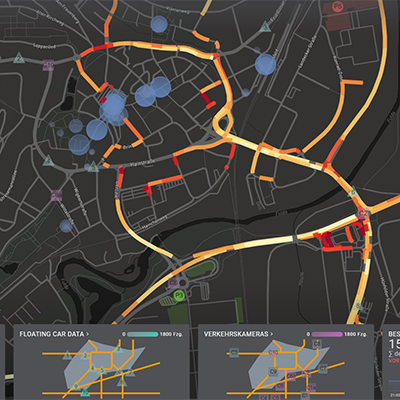
We support you in your digital transformation!
We are also available for demonstrations at our branches in the U.S., Berlin, Darmstadt, Munich, Walldorf or Chemnitz.
We are also available for demonstrations at your location.
Rüsselsheim
Holistic approach
For example, individual energy consumption was presented to the tenants in the selected neighbourhood in a clear and concise manner on a tablet using an app. There are also plans to expand the charging infrastructure for electric vehicles, which will then be extended throughout the city.
This holistic approach is also reflected in the current DIN Spec 91397, which was developed in cooperation with [ui!] and contains guidelines for the implementation of neighbourhood management. This is the basis for successfully transferring these digital solutions to the entire city.
Rüsselsheim, Horlacher Park
The residents of the "Horlacher Park" (quarter of the future) are to be given the opportunity in future to read individual consumption data from their own household on their trays.
In addition to the installation of appropriate sensors and the provision of the tablets with the necessary software, interviews with residents and information events in the neighbourhood were conducted in order to inform residents individually and, if necessary, to seek solutions to possible problems together.
In a permanent exchange between all partners, a model neighbourhood consisting of numerous smart residential units was gradually formed into a smart neighbourhood network.
Additional e-charging stations for car sharing and the charging of private cars are planned. Close cooperation with the city for the clever use of the existing infrastructure is indispensable. Gradually, public WLAN is to be introduced nationwide. Step by step, further smart home aspects will be implemented and tested in the model quarter.
[ui!] UrbanPulse (Open Urban Data Platform)
Participating companies of the [ui!] Group:
[ui!] Urban Software Institute
[ui!] Urban Mobility Innovations
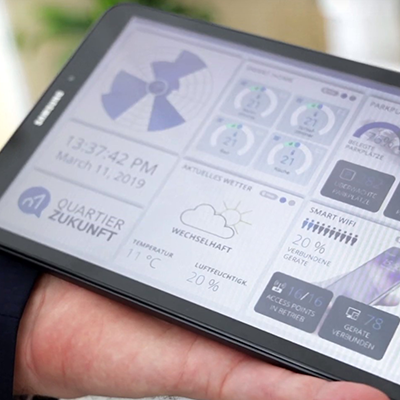
Electric City Rüsselsheim
The air quality in many German cities is not optimal. Nitrogen dioxide levels have been exceeded for years. Rüsselsheim is one of eleven Hessian cities that exceed the limit values for air pollutants on their roads.
The city of Rüsselsheim am Main has therefore drawn up a master plan for "sustainable mobility" (Green-City Plan for Rüsselsheim am Main), which contains a large number of measures to significantly reduce nitrogen dioxide levels. These include the expansion of the charging infrastructure for electric vehicles and thus support for the use of electric vehicles.
[ui!] UrbanPulse (Open Urban Data Platform)
Charging infrastructure
Participating companies of the [ui!] Group:
[ui!] Urban Software Institute
[ui!] Urban Mobility Innovations
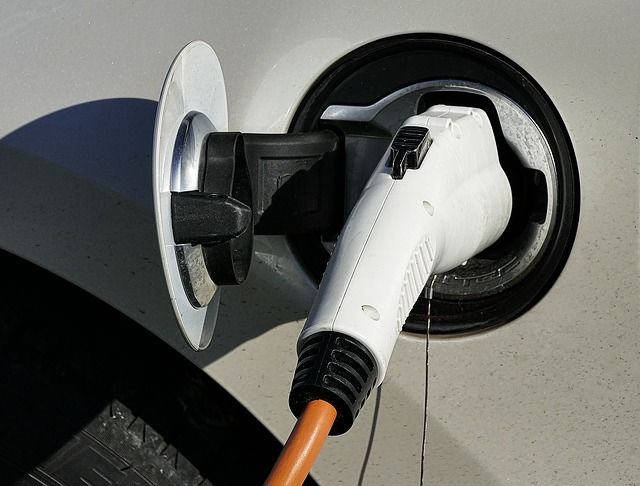
Videos
[ui!] & Microsoft - a good team
[ui!] & festival cockpit of Bad Hersfeld
[ui!] as a Service - [ui!] Urban Lighting Innovations
Would you like to know more about our solutions?
